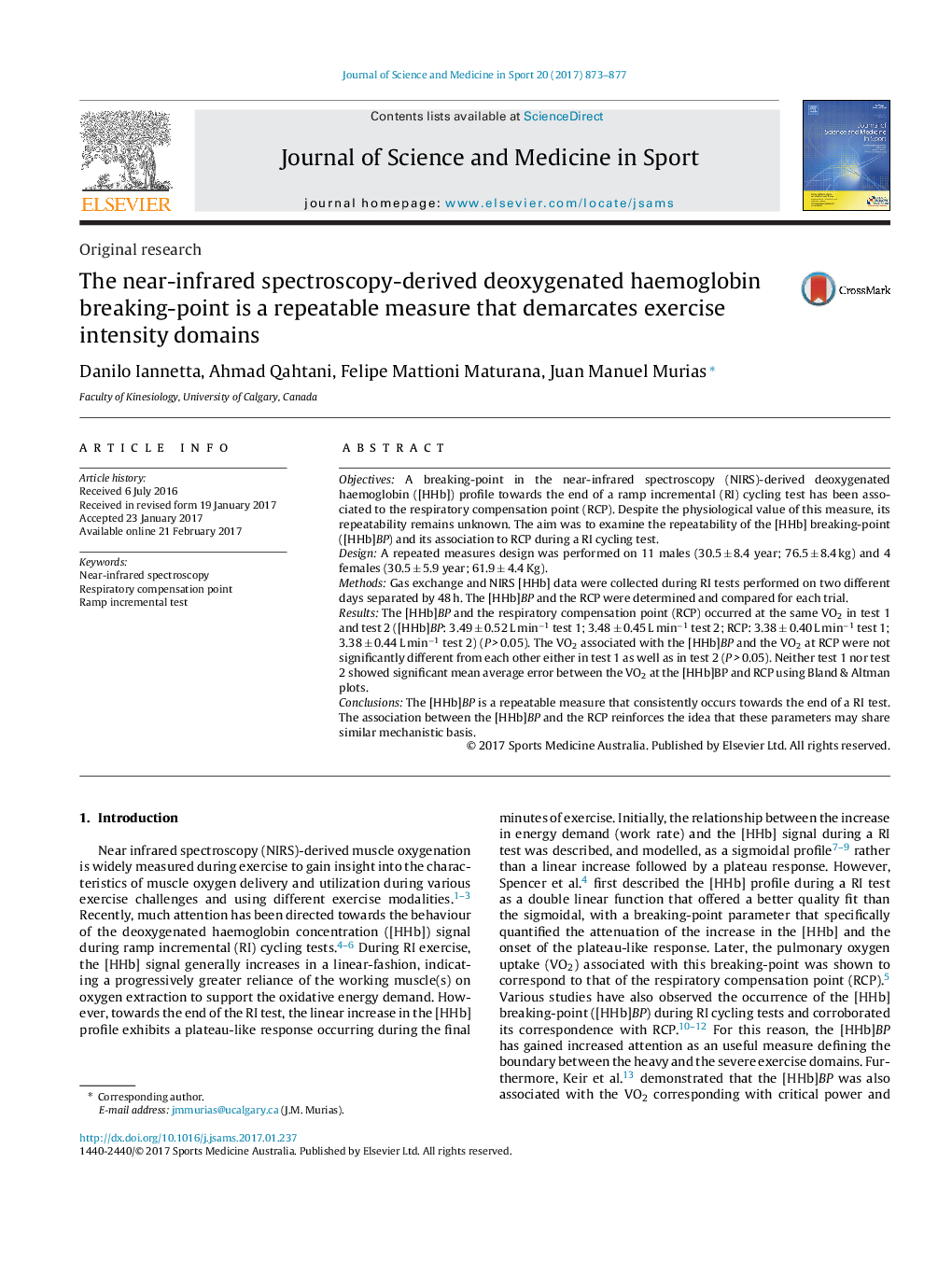| Article ID | Journal | Published Year | Pages | File Type |
|---|---|---|---|---|
| 5573804 | Journal of Science and Medicine in Sport | 2017 | 5 Pages |
ObjectivesA breaking-point in the near-infrared spectroscopy (NIRS)-derived deoxygenated haemoglobin ([HHb]) profile towards the end of a ramp incremental (RI) cycling test has been associated to the respiratory compensation point (RCP). Despite the physiological value of this measure, its repeatability remains unknown. The aim was to examine the repeatability of the [HHb] breaking-point ([HHb]BP) and its association to RCP during a RI cycling test.DesignA repeated measures design was performed on 11 males (30.5 ± 8.4 year; 76.5 ± 8.4 kg) and 4 females (30.5 ± 5.9 year; 61.9 ± 4.4 Kg).MethodsGas exchange and NIRS [HHb] data were collected during RI tests performed on two different days separated by 48 h. The [HHb]BP and the RCP were determined and compared for each trial.ResultsThe [HHb]BP and the respiratory compensation point (RCP) occurred at the same VO2 in test 1 and test 2 ([HHb]BP: 3.49 ± 0.52 L minâ1 test 1; 3.48 ± 0.45 L minâ1 test 2; RCP: 3.38 ± 0.40 L minâ1 test 1; 3.38 ± 0.44 L minâ1 test 2) (P > 0.05). The VO2 associated with the [HHb]BP and the VO2 at RCP were not significantly different from each other either in test 1 as well as in test 2 (P > 0.05). Neither test 1 nor test 2 showed significant mean average error between the VO2 at the [HHb]BP and RCP using Bland & Altman plots.ConclusionsThe [HHb]BP is a repeatable measure that consistently occurs towards the end of a RI test. The association between the [HHb]BP and the RCP reinforces the idea that these parameters may share similar mechanistic basis.
